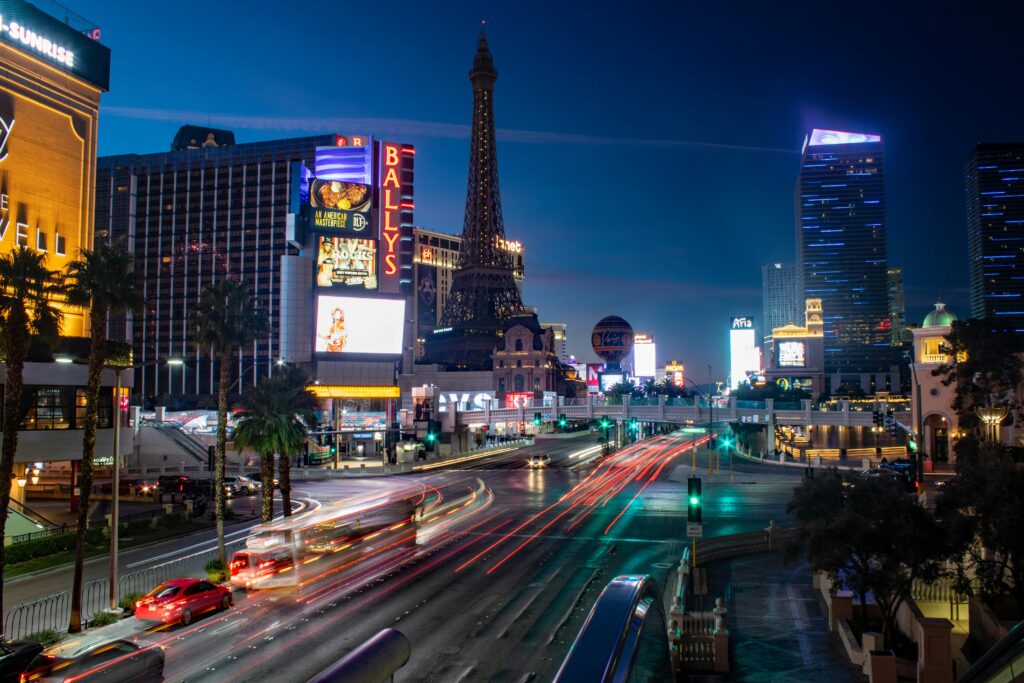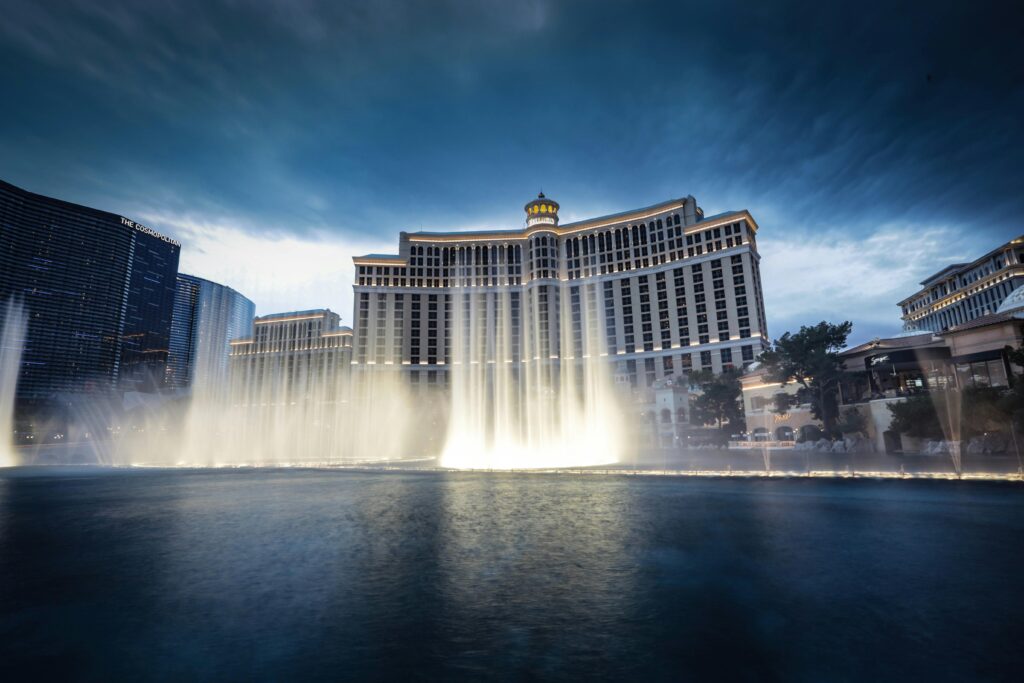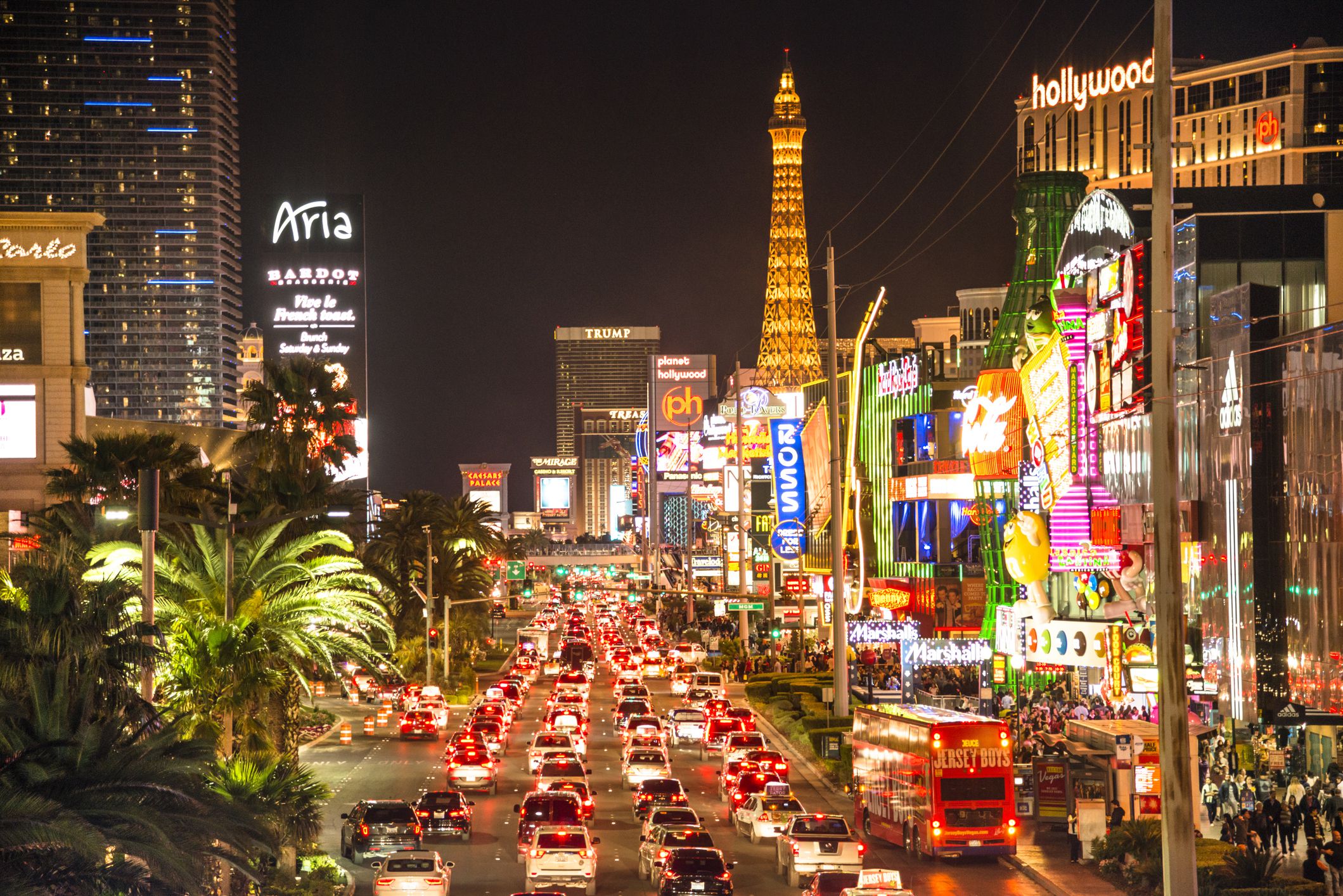Half of the world’s registered consumer and trade shows take place in North America. Its exhibition market size, the largest in the world for a single nation, makes it an attractive prospect for investment.
But that’s only part of the story.
While one could be forgiven for thinking mature markets are given short shrift in the strategic announcements of today’s emerging-market-focused organisers, there is no denying that the US still presents international investors with an exciting prospect for business. The culture and appetite for exhibitions is deeply ingrained in America’s industry.
As we’ve already discovered, the European system is typified by the fact that most of the big fairgrounds – for example the German messe – are owned by individual cities. Over time many of the great European cities have appointed in-house staff and created organising bodies tasked with producing shows; this is the case at venues such as Messe Düsseldorf, Amsterdam RAI and IFEMA Madrid. In essence, the large fairgrounds own the shows, and more often than not, also produce the shows.
We’ve seen from the genesis of the German exhibition industry that the fairgrounds typically co-ordinate with, and get the support of, the appropriate industry associations. For example, in Germany the VDMA is the major association for machinery, with seven divisions supporting the major fairgrounds in producing their events. Cohesion is also strong in Germany, with exhibition industry association AUMA seeking subsidies for shows, both domestically and internationally, with funds passed through the association by the actively promotional government. That said, in the last 15 to 20 years Germany has, of course, seen greater international collaboration, with large independent organisers entering the market and leasing or renting the fairgrounds to produce their own shows.
In the US they do things differently. The convention centres are usually built by the city, often funded by hotel room night taxes, and used by multi-purpose industries, accommodating both consumer and trade associations. For the most part, these venues do not make a profit. Instead they serve as a conduit to bring in associations and provide revenue for the city, its hotels, restaurants, local businesses, taxis and so on.
The profile of the event organiser is different too. Events in the US are run predominantly by associations, often without the involvement of professional organisers; the potential rewards for a keen-eyed and connected overseas entrepreneur armed with innovative views and a black book of international contacts are great and can take a company a long way. For example, in America the major trade associations and groups developed events for the machinery and industrial equipment industries.
As Ned Krause, founder of one of America’s longest-standing professional organisers EJ Krause, explains: “Shows for packaging, plastics, oil and gas and so on, were started by associations and became a major revenue source for the associations, in order to provide lobbying activities, market research and support for the industry. In recent years many of the smaller to medium associations have begun selling their exhibitions or producing joint ventures with private industry in order to be more cost efficient. Many of the medium and smaller size associations also contract out to private industry to do the exhibition part of the event.” In the last quarter of a century, for-profit companies such as EJ Krause have been actively developing and producing events, bringing creativity to the association marketplace. The largest of them have also been very active in the acquisition market.
As an aside here, it is worth mentioning that for all its undoubted particularities, a keen-eyed and connected overseas entrepreneur armed with innovative views and a black book of international contacts could still take a tyro company a long way in the US market.
Today, the US is by some margin the largest national exhibition market in the world for exhibitions and conventions, but to understand why that is so, you have to trace the story back to the dawn of the Sixties.
While industrial exhibitions have been held in the US for more than 100 years, typically at trade mart-type facilities, the first purpose-built exhibition centres were not constructed until 1959. That year a small exhibition hall with 50,000 gross square feet (4,645sqm) feet was added on to the Rotunda in Las Vegas, Nevada. The next year, McCormick Place in Chicago opened, with some 500,000 square feet of exhibition space and 50,000 square feet of meeting space.
Several cities in America’s south, including Dallas, Houston, New Orleans, Atlanta and Orlando, followed in building convention centres in the Sixties and Seventies. Of the major American cities, one of the last to enter the competition for events was, perhaps surprisingly, New York. While it could lay claim to the Coliseum and Madison Square Garden, it was losing the race for exhibition space compared with a dozen other cities. This was perhaps due to the fact that politicians could not agree on what to build in terms of a venue that could compete; disagreements over the issue of where to build were an added complication.
Finally, in 1977 a letter written to the mayor of New York by Richard Ravitch (who latterly served as lieutenant governor of New York) outlined the results of the work an obscure committee had done on what to build and where to build it. Ravitch’s recommendation ultimately prevailed with the mayor, and on its back the Jacob K. Javitz Convention Center, designed by renowned architect IM Pei, opened in 1986.
New York and Chicago adopted a model of filling their calendar with annual events booked for multiple years. Most other cities had one or two major annual events (not counting public or consumer-gated shows such as motor shows, lawn and garden or boat shows) while New York and Chicago had several. Once Las Vegas became a more acceptable destination, it pursued annual business relentlessly and won the bid to host a number of events, such as the Hardware Show. The combination of lower costs to the organisers and convenient and less expensive hotel rooms for the visitors proved a persuasive argument.
Doug Ducate spent 15 years leading the Center for Exhibition Industry Research (CEIR), and for most of his career prior to that he worked in the oil and gas industry, producing exhibitions in virtually every oil-producing province around the world. He says that the advent of what are mostly called convention centres in the US (more commonly referred to as exhibition centres in Europe and Asia) was prompted by two significant events occurring around the same time. First, was the completion of the interstate highway system, and secondly the commercial introduction of the jet plane. It was these two watershed developments that made it possible to travel cross country to attend a three- or four-day event.
“Destinations recognised the economic impact of out-of-town visitors and, as they saw the advent of major exhibitions, they rushed to build facilities,” says Ducate. “They recognised that a destination needed three main elements to host these events: air carriage, hotel rooms and a facility large enough to house the events.”
With the introduction of the jet airplane, these cities got the air carriage they needed, and since most cities had some hotel room inventory the obvious way to complete the package and compete for convention business was build a facility. Local voters were asked to approve the use of public funds to build centres by introducing a hotel occupancy tax (HOT). According to Ducate, the pitch for this potentially divisive move was that the cost to build the convention centre would be paid for by the taxes collected from the visitors, while the entire community stood to benefit from the money those visitors would leave in the city:
“To attract business, the destinations charge very low usage fees to the organisers, choosing instead to use the facility as a loss leader offset by the economic impact of the visitor taxes and money spent,” he says. Many cities have since levied fees on other visitor services such as restaurant meals and rental cars. In most major cities, the HOT can be between 15 and 20 per cent of the hotel cost. Destinations also sell features or benefits. Features can be natural, such as the Rocky Mountains, Lake Michigan or San Francisco Bay, or they can be man-made such as Disneyland, gaming houses or the French Quarter in New Orleans. Cities without comparable features – Dallas and Atlanta come to mind – sell benefits such as significant air carriage from around the globe and reasonable hotel room rates and restaurant prices.
What happens in Vegas … resonates around the world
More than half of the 10,000 business-to-business exhibitions are held in just 16 US cities, but Las Vegas remains perhaps the best known of all the exhibition and convention destinations in the world. The city hosts the largest number of events in the US, with Chicago and Orlando vying for second place. The other 13 US exhibition cities vary from year to year as many of the exhibitions rotate among various cities.

It is Vegas that stands above all others. A permanent market exists to cater for attendees at its events, with gambling, shows and plenty else to keep the attendees and exhibitors occupied. Indeed, the city has for many years gleefully traded on its reputation as ‘Sin City’. It was the destination of choice for conventioneers out to enjoy themselves, and for exhibition attendees looking to blow off steam after a long day on the show floor. It continues to hold this attraction today with its wry catch-line ‘What happens in Vegas, stays in Vegas’.
However, this was not always so. Ducate believes that what changed over time was that the many features and benefits offered by Las Vegas came to outweigh the moral imperative not to be seen there. “What was seen to be sinful in the 1960s and 1970s is now culturally acceptable in the eyes of most Americans,” he observes. “And such things as casino gambling have now spread across the country, as cities and states thirsty for revenue recognised the huge potential gaming offers.”
It is now unlikely that any other major destination can afford to outdo Las Vegas. The local needs of residents require political leaders to focus on solving local problems and pursue economic development by emphasising business relocations and tourism more than conventions. “It seems equally unlikely that the enlightened leadership of Las Vegas will turn its back on the very lucrative meetings and exhibitions business. Given the current trend of accepting lower moral standards than what existed in the US 50 years ago, it is doubtful the label ‘Sin City’ will scare anyone away today,” says Ducate.
Besides dealing with its initial image problem, Las Vegas faced major regional competition from Los Angeles and San Francisco, then later Anaheim and San Diego. But as these California destinations competed for business and built facilities, they did so knowing that they had limited resources and had to fund other infrastructure for the rapidly growing state. As a result they could only build what was politically possible, not what the market demanded. They then could not expand their facilities fast enough to meet demand.
Las Vegas, on the other hand, had an enlightened leadership and developers with very, very deep pockets who were willing to continue to build more space and expand the Las Vegas Convention Center to meet the insatiable needs of growing exhibitions. They reached out to the international community and offered incentives for international flights and also expanded the domestic airlift. And once again, unlike most cities, they were willing to invest the money to modernise and expand the airport to accommodate the additional traffic.
Doug Ducate puts it succinctly: “Organisers began to recognise what may have been a reluctance to go to Las Vegas or be seen in Las Vegas had melted away, and without that stigma they happily booked events that then recorded record numbers and revenue.” “When the major conservative faith-based group, the Southern Baptist Convention, chose Las Vegas for their event, whatever stigma may have been attached to going to Las Vegas was gone forever.”
A strange phenomenon occurred as a result of Las Vegas’ transition into a business events destination of choice. Organisers not only had record numbers, they also found what later came to be known as ‘conscience attendance’. The exhibition floor and the meeting rooms were overflowing with attendees apparently eager to be seen attending the event, and not off playing golf or sitting in a casino. It was a good way to appear earnest in your approach to work and partnership. One is reminded of the Stanford marshmallow experiments on delayed gratification.
While the Las Vegas Convention Center built new space to accommodate changing organiser needs, two privately owned hotels, the Sands and Mandalay Bay, built their own exhibition halls, and each has more than one million square feet, giving organisers even more options. The venue today totals more than two million square feet. Among its most prominent shows is the Consumer Electronics Show (CES), which is attended by industry and celebrities and covered by mainstream media around the world.
Lew Shomer, the former president of US exhibition organiser association SISO, puts much of the ascent of Vegas as a leading destination down to the arrival of another technology show in 1979, the year Boston-born Comdex made its Vegas debut. This was when the US-based magazine Trade Show World began its list of the largest 200 shows, and people started to see that so many of the larger shows were in Vegas. “Although CES was big and in Vegas, Sheldon Adelson created a circus atmosphere with Comdex; that is when Vegas got the attention that it was the destination,” he says. “Don’t forget back then there were like 8,000 rooms; now there are over 100,000, I believe. I still think Comdex changed the way everyone saw Vegas.”

Las Vegas aside, the US exhibition industry experienced rapid growth in the last quarter of the 20th century. That in large part was fostered by non-profit associations. “All associations represent a community of individuals or companies with common interests. It is natural for these groups to want to meet,” explains Doug Ducate. “And since they normally have a supply side the idea of adding an exhibition component becomes a natural tie-in.” Many associations today rely on the non-dues revenue generated by their exhibitions.
Of the 10,000 or so exhibitions held in the US each year, around two-thirds are owned by associations. According to the CEIR Index Report, 74 per cent of these occupy less than 50,000 net square feet of exhibit space. That is the result of some large horizontal exhibitions that have been carved into multiple vertical silos or niche events.
Two good examples of this phenomenon are the healthcare industry and the sporting goods industry. The American Medical Association and the American Hospital Association both produce annual meetings that used to have major exhibition components; now, neither has an exhibition. Instead, the exhibitions have been left to the smaller specialty healthcare groups such as cardiologists, family physicians and ophthalmologists. The result, according to Ducate, is that the healthcare sector has the largest number of exhibitions, with some 17.6 per cent of the 10,000 total because each speciality has its own annual meeting and its own exhibition.
The sporting goods industry also had a major horizontal event owned first by the retailers then later by the manufacturers. The event does not exist anymore in the same format, a result of the industry fragmenting into speciality events for golf, tennis, skiing and so on. Today, the computer-based IT industry appears headed in the same direction with the elimination of horizontal events. The CES stands as an exception to the fragmentation, although it too is seeing some of its major exhibitors – Apple and Microsoft – branch out into their own, single brand events.
Yet the exhibition centres are also branching out. Some are now looking at producing shows, particularly in the consumer arena. “This is potentially controversial due to the fact that they may compete with the organisers that are producing events in their facilities,” comments Ducate.
It certainly was controversial in 2010. Back then Chicago mayor Richard Daley suggested that the city’s McCormick Place Convention Center, then the largest in the US, lay off “99 per cent” of its employees and instead allow show organisers to hire their own contractors.
The venue had been losing a string of large shows due to the high service costs associated with the unions, and was desperately re-evaluating its policies to discourage further events from moving to cities such as Las Vegas.
Some organisers took the opportunity to publicly blame the Chicago unions and exhibitor costs as part of the reason for leaving. The city took note and, in response, made the unprecedented move of forgoing exclusive electrical service and catering contracts for McCormick Place.
“When the purpose built centres were built, it was a common practice for the buildings to designate certain services that invaded the building systems as exclusive,” says Ducate. “These typically included telephones (usually switchboard style), electrical, plumbing including natural gas, and food and beverage. Over time some of the services such as telephones faded away. Buildings learned how to zone electrical, so a bad connection in the exhibit hall no longer threatened total building electrical.”
Even though the reasons for the exclusive contracts had disappeared, most had become a source of revenue that helped defray building operating costs that exceeded the rental revenue.
The battle between the unions and those seeking to remove these exclusive contracts reached a peak in 2010. Speaking to reporters after the formal opening of the BIO 2010 convention at McCormick Place, Mayor Daley said the venue should cut almost all its staff, rent the space out, and allow organisers to “take the space, and contract everything out.”
“They get their own contractors and sub-contractors. They get their own workers. They do everything for the show, and McCormick Place does nothing except rent the space. Get out of that business. It should be basically a shell,” he said.
Jim Greenwood, the CEO of the Biotechnology Industry Organisation (a McCormick Place client that attracted 15,000 attendees with each event, bringing around USD$25m into the city’s economy), said competition for the show from other venues was stiff. “Certainly Chicago is an expensive place to hold a convention,” he conceded. “If it becomes less expensive to hold a convention in Chicago, we’ll be more likely to come back,” he added.
In time, the Illinois State Legislature provided an annual US$20m subsidy to McCormick Place for three years to offset the electrical and catering revenue loss.
Ducate says the US industry believed this dramatic shift in Chicago would trigger changes in other major destinations, but to date it has not happened. “What is interesting about the point is that today several destinations are organising their own events to fill their dark days,” he says. “That was always considered high risk since you could effectively compete with a potential travelling event that refused to come because of the event the building is producing.”
None the less, the Chicago standoff, as well as developments in terms of the shift towards professional exhibition and trade show management, has had a strong effect in globalising the US exhibition marketplace. The resulting shift from the historic practice of leadership coming to the US from the UK or Europe has in some places been reversed. “Watching Americans trek off to the UK to run the largest exhibition organiser’ companies appears to signal an historic shift,” proclaims Ducate.
America continues to be the land of opportunity and whether it’s Las Vegas, Chicago, New York, Atlanta or San Diego, it’s possible to make an exhibition business work if the offering is right. The market remains progressive, or in the erudite words of Ned Krause, “highly accessible to unique and ground-breaking events”.


Leave a Reply